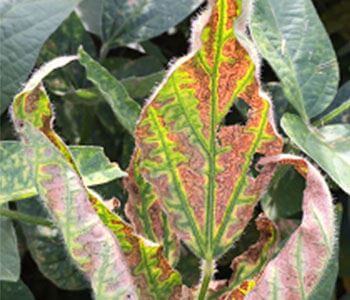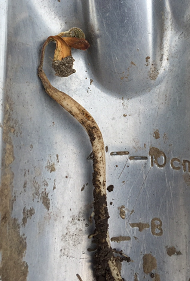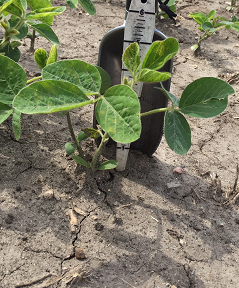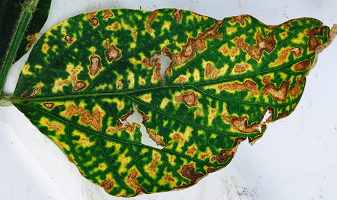Impacts from Soybean Diseases
Dec 02, 2018

Brian Weller – Lead Agronomist
Over the course of my career, questions regarding seed treatment have changed from if growers should use a seed treatment, to, which seed treatment should they use.
Traditionally, seed treatments were mainly used to help fight seedling diseases such as Phytophthora, Pythium, Rhizoctonia, and Fusarium. As an Agronomist I would prefer not to look at a disease-ridden plant, as shown below and on the left, compared to a healthy one shown below and on the right.


In recent years, due to the addition of insecticides we are also reducing the early season impact of insects such as Bean Leaf Beetle, Wireworms, White Grubs, Seedcorn Maggots and Soybean Aphids.
It is my experience seed treatments that contain an insecticide are providing early season Soybean Aphid suppression. This suppression, is reducing Aphid numbers to the point that soybeans without seed treatment, are reaching sprayable levels 7-14 (or more) days sooner. This suppression also allows natural predators such as Asian Lady Beetles more time to reduce aphid numbers.
Another attribute that many quality seed treatments provide is better emergence and early season vigor, compared to untreated comparisons. It has been documented that this better emergence and vigor, translate to conservativity 16,000 more plants.
Soybeans do not like cold wet conditions, therefore, from an historical perspective, it was not unusual to have soybean planting populations 175-225,000 or more seeds per acre, to overcome seedling loss, and disease. By utilizing quality seed treatments, we have been able to reduce plant populations to 130-150,000 per acre. In many instances, with variable rate planting recommendations, from our Central Advantage team, we have reduced populations to 100-110,000 plants, while also increasing yield.
In the last few years we have started to see increased pressure from Sudden Death Syndrome (SDS), which starts early in the growing season. One of the most effective method of reducing the yield reduction is to utilize a seed treatment that contains the product ILeVo in it.

Lastly, our cropping rotations have switched from a Corn on Corn to a Corn / Soybean rotation. Planting soybeans every other year will increase the seedling disease pressure, by utilizing a quality Seed Treatment you are protecting your plants as well as your yield.
Over the course of my career, questions regarding seed treatment have changed from if growers should use a seed treatment, to, which seed treatment should they use.
Traditionally, seed treatments were mainly used to help fight seedling diseases such as Phytophthora, Pythium, Rhizoctonia, and Fusarium. As an Agronomist I would prefer not to look at a disease-ridden plant, as shown below and on the left, compared to a healthy one shown below and on the right.


In recent years, due to the addition of insecticides we are also reducing the early season impact of insects such as Bean Leaf Beetle, Wireworms, White Grubs, Seedcorn Maggots and Soybean Aphids.
It is my experience seed treatments that contain an insecticide are providing early season Soybean Aphid suppression. This suppression, is reducing Aphid numbers to the point that soybeans without seed treatment, are reaching sprayable levels 7-14 (or more) days sooner. This suppression also allows natural predators such as Asian Lady Beetles more time to reduce aphid numbers.
Another attribute that many quality seed treatments provide is better emergence and early season vigor, compared to untreated comparisons. It has been documented that this better emergence and vigor, translate to conservativity 16,000 more plants.
Soybeans do not like cold wet conditions, therefore, from an historical perspective, it was not unusual to have soybean planting populations 175-225,000 or more seeds per acre, to overcome seedling loss, and disease. By utilizing quality seed treatments, we have been able to reduce plant populations to 130-150,000 per acre. In many instances, with variable rate planting recommendations, from our Central Advantage team, we have reduced populations to 100-110,000 plants, while also increasing yield.
In the last few years we have started to see increased pressure from Sudden Death Syndrome (SDS), which starts early in the growing season. One of the most effective method of reducing the yield reduction is to utilize a seed treatment that contains the product ILeVo in it.

Lastly, our cropping rotations have switched from a Corn on Corn to a Corn / Soybean rotation. Planting soybeans every other year will increase the seedling disease pressure, by utilizing a quality Seed Treatment you are protecting your plants as well as your yield.
